
The FPJ Big 50 Products ranks the 50 best-selling fresh fruit and vegetable products by sales value, using Kantar Worldpanel data for the 52 w/e 20 May 2018.
46. Garlic
Value: £40.9m (+3.2%) Volume: 6.3m kg (+9%)
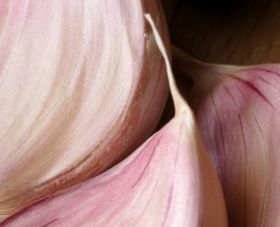
Garlic well placed for steady growth
The trend for home cooking continues to drive up sales in the garlic category, with the pungent allium continuing to enjoy healthy volume growth. The success of home delivery recipe kits from the likes of HelloFresh and Gousto is encouraging more consumers to cook from scratch, and garlic is a staple of most meal kits.
By contrast, sales to supermarkets are “relatively static”, according to Robert Oldershaw of Oldershaw Group. “Garlic’s never promoted very heavily and retailers tend to let it tick along nicely,” he says. When it comes to product quality, Oldershaw reports issues with last year’s Spanish crop, however he says there are indications that quality will improve this year as the season starts to get underway.
Looking at the global market, several factors could help to drive steady growth in garlic production in the coming years, namely population growth, government assistance for Asian producers and the development of frost-resistant varieties.
Market researcher IndexBox predicts that global garlic production will, on average, increase by 1.8 per cent a year for the next nine years, pushing the total volume produced to 31.1 million tonnes by 2025. Total garlic revenues for producers and importers worldwide reached $18.1 billion (£13.9bn) in 2016 – eight per cent higher than the year before.
47. Blackberries
Value: £40.4m Volume: 3.7m kg
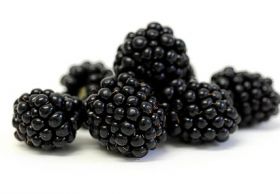
Blackberries performing well as a solo act
Another stellar year for blackberries shows the public are getting on board with their renaissance as a sweeter, snackable variety. Once confined to puddings or aficionados of sour bites, few people now see any reason why blackberries can’t go on to challenge its more decorated counterparts.
Their makeover can be traced back to sweeter varieties hitting the market, like Black Magic and Karaka Black, while American breeders Driscoll’s developed the sweeter, larger Victoria variety, grown by Berry Gardens in the UK. Jacqui Green, chief executive of Berry Gardens, says: “The sweet blackberry varieties are a new category in the market and growing the value of the entire market rather than cannibalising sales from other berries.”
Blackberries have been tipped to double in value by 2020, and are now becoming part of the campaign trail, with promotional activity bringing new customers. Green says the category will continue to grow “with continued investment in production and increasing awareness of sweet blackberries supported by in-store promotion and activity, such as our own PR campaign on social media.”
Nick Marston, chairman of British Summer Fruits, adds: “The older blackberry varieties were used in things like crumbles, but now we want to eat them on their own.”
48. Grapefruit
Value: £34.6m (+5.1%) Volume: 25.9m kg (-2.6%)
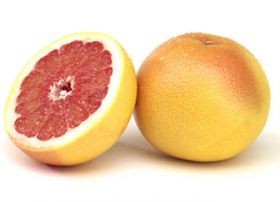
Committed fanbase keeps grapefruit going
One of the junior members of the citrus category, popular at breakfast and with a loyal fanbase, grapefruits saw price inflation yield higher values last year, but tighter supply hit volumes following one of America’s worst-ever storm seasons.
“Pink availability was significantly impacted by the hurricanes during the last USA season,” says Alastair West, category development manager for Capespan UK. “This was the largest impact to the category and volume decline and inflation.”
According to Matthew Embrey, senior commercial manager at MMUK, the shortages meant that “raw material prices shot up with retailers also having to increase prices on loose pink fruit.” Retail format is also tricky with grapefruit. Embrey says: “Loose is the main focus of grapefruit sales, with customers usually purchasing one to three fruits, so volume will always be low.”
West noticed that there was less promotional activity last year in retailers. “Category growth is certainly possible but the product needs to become more familiar to younger consumers and ranges remain limited in the likes of the discounters,” he says. Embrey adds: “A campaign for grapefruit would help bolster sales, but it’s still a small category with a loyal but not expanding customer base.”
49. Kale
Value: £31.6m (-7.5%) Volume: 7.5m kg (-4.5%)
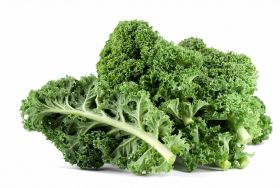
Sales down as shoppers branch out
It had to happen eventually – the meteoric rise of kale has faltered. According to the British Growers’ Association, the UK’s planted area for kale increased from around 550 hectares in 2013 to almost 3,000ha in 2017, which is testament to the superfood’s booming popularity. However, in the past year sales have started to decline, and according to George Beach of Mudwalls Farm, this is largely down to customer choice.
“There are a lot of other health products available now,” he says. “It’s not necessarily a panic decline in kale eating, it’s a downward trend, but I think it’s because people are trying other things.” Beach expects sales of kale to “level off for a bit”, but further growth could be driven by new varieties, he says.
One company focused on bringing through interesting new varieties is Tozer Seeds. For a number of years the vegetable breeder has been trying to develop more refined versions of kale, such as the Buttonhole variety, in an effort to make the product more diverse and versatile. “We hope that the introduction of newer types will help lift the category by inspiring shoppers to do more with kale,” says commercial director David Rogers. “These newer varieties will be more expensive than standard kale so we hope they will help to increase revenue in the category.”
50. Radish
Value: £29.9m (+10.1%) Volume: 12.6m kg (+6.1%)
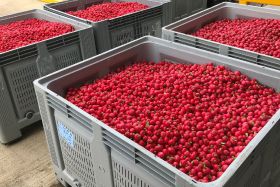
Photogenic veg comes of age
The radish category might not seem like a particularly glamorous one but the small peppery salad vegetable is having its moment in the sun, posting impressive sales growth of 10.1 per cent in the year to 20 May 2018.
“Radish seems to be one of the crops of the moment,” says G’s marketing director Anthony Gardiner. “We are seeing a significant increase in the use of radish in foodie magazines and food photography, which is clearly inspiring customers to try the vegetable as it’s still only at 30 per cent household penetration.”
Looking forward, Gardiner expects to see further growth thanks to sales rises in speciality and new categories featuring alternative colours and shapes. In addition, Tesco launched Radish Bites in summer 2018 – packs of crinkle-cut, ready-to-eat radish, which have been successfully developed and sold in the US over the last couple of years.
As the country’s biggest radish producer, G’s – which has caught the eye with the UK’s first commercial crop of watermelon radish this summer – has added new washing and grading lines to its UK radish hub at Feltwell Growers in Norfolk, with the company racing to construct a new 980 sq metre building to house the new equipment.



